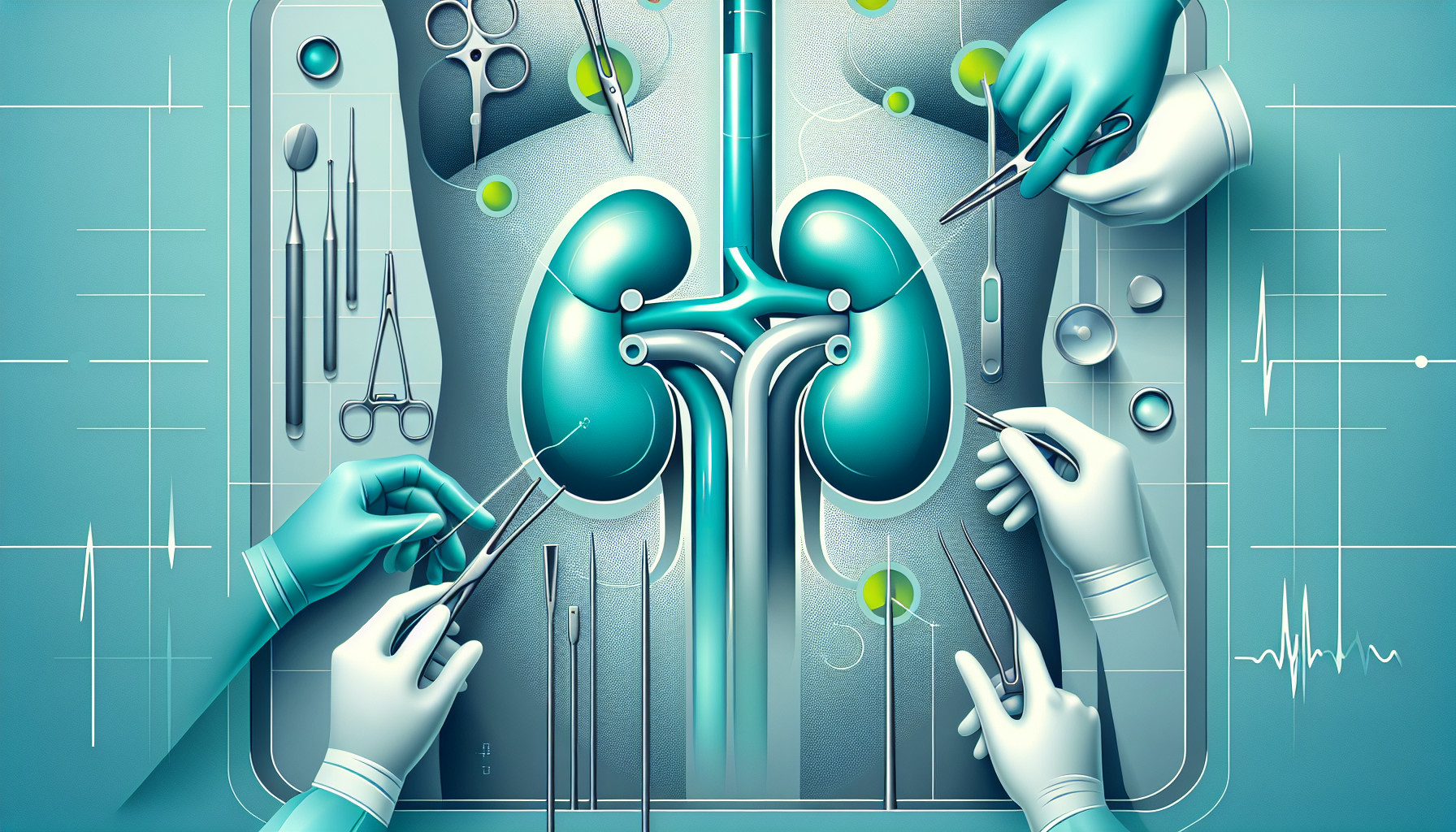Our Summary
This research paper discusses the advancements and challenges in dual kidney transplants, a procedure in which two kidneys are transplanted into a patient instead of just one. This method has become more popular in recent years as it allows for the use of kidneys that may not be perfect, but are still functional, and it can also reduce the time patients have to wait for a transplant.
However, there are no clear rules on which donors and recipients are best suited for dual transplants, and most decisions are made on a case-by-case basis by the doctors involved. Many transplant centers prefer to place both kidneys in the same location within the recipient’s body, and there are various surgical techniques available to connect the new kidneys to the recipient’s blood vessels.
Despite the fact that there can be more risks to blood flow in the new kidneys, overall, the rate of complications from dual kidney transplants is similar to that of single kidney transplants. The performance and survival rate of the transplanted kidneys are also promising and similar to those of single kidney transplants.
The main issue is that there are no standardized guidelines for dual kidney transplants, making it difficult for transplant centers to adopt the procedure more widely. The paper reviews the current state of dual kidney transplants, suggesting a need for further research and guidelines.
FAQs
- What is dual kidney transplant and how has it evolved over the years?
- What are the current guidelines for allocation of donors and candidates for dual kidney transplant?
- How does the complication rate of dual kidney transplant compare to single kidney transplant?
Doctor’s Tip
A helpful tip a doctor might tell a patient about kidney transplant is to follow a healthy lifestyle post-transplant to ensure the success of the new kidney. This includes maintaining a balanced diet, staying physically active, managing stress, avoiding smoking and excessive alcohol consumption, and taking prescribed medications as directed. Regular follow-up appointments with healthcare providers are also crucial to monitor kidney function and overall health.
Suitable For
Patients typically recommended for kidney transplant are those with end-stage renal disease who are suitable candidates for surgery and have a suitable living or deceased donor. In particular, patients who have a long waiting time for a single kidney transplant, older patients, and patients with multiple comorbidities that may compromise the success of a single kidney transplant may be considered for a dual kidney transplant. Additionally, patients with a high level of sensitization or who have had previous failed kidney transplants may also be recommended for a dual kidney transplant. Ultimately, the decision for dual kidney transplant is made on a case-by-case basis by the transplant team, taking into consideration the patient’s individual circumstances and the availability of suitable donor kidneys.
Timeline
- Before kidney transplant:
- Patient is diagnosed with end-stage renal disease (ESRD) and is referred for evaluation for kidney transplant.
- Patient undergoes extensive testing and evaluation to determine eligibility for transplant, including physical exams, blood tests, imaging studies, and psychological evaluation.
- Patient is placed on the transplant waiting list and waits for a suitable donor kidney to become available.
- Once a suitable donor kidney is found, the patient undergoes surgery to receive the transplant.
- After kidney transplant:
- Patient undergoes post-operative care and monitoring in the hospital to ensure the transplant is successful and there are no complications.
- Patient is prescribed immunosuppressive medications to prevent rejection of the transplanted kidney.
- Patient undergoes regular follow-up appointments with their transplant team to monitor kidney function, adjust medications, and address any issues.
- Patient may experience side effects from immunosuppressive medications, as well as potential complications such as infection, rejection, or organ failure.
- With proper care and management, the transplanted kidney can provide improved quality of life and longevity for the patient.
What to Ask Your Doctor
- What are the benefits of dual kidney transplant compared to single kidney transplant?
- What are the risks and potential complications associated with dual kidney transplant?
- How are suitable donors and recipients selected for dual kidney transplant?
- What is the success rate of dual kidney transplant in terms of kidney survival and function?
- How does the recovery process differ for dual kidney transplant compared to single kidney transplant?
- What is the long-term outlook for patients who undergo dual kidney transplant?
- Are there any specific lifestyle changes or medications that need to be followed after dual kidney transplant?
- How often will follow-up appointments be required after dual kidney transplant?
- What are the chances of rejection or other complications after dual kidney transplant?
- Are there any specific factors that may make a patient ineligible for dual kidney transplant?
Reference
Authors: Hassan A, Halawa A. Journal: Exp Clin Transplant. 2015 Dec;13(6):500-9. PMID: 26643671
